Metro-Goldwyn-Mayer’s The Great Waltz, released in November 1938, is the ultimate achievement in black-and-white feature length musical filmmaking. During Hollywood’s Golden Age, specifically the decade between the arrival of sound and the introduction of Technicolor, the ever-evolving formula for ‘How to make a musical’ came to a gushing climax with this fantastical screen bio of Johann Strauss Jr. The following month, during Christmas Week 1938, MGM premiered the first three-strip Technicolor musical film, Sweethearts, an opulent reworking of Victor Herbert’s 1913 Broadway operetta. Studio chief Louis B. Mayer added even more gravitas to the occasion by starring its wildly popular romantic singing team, Jeanette MacDonald and Nelson Eddy. Eight months later, The Wizard of Oz was delivered to Grauman’s Chinese Theater. Almost suddenly – it’s a new dawn, it’s a new day. Sound stages were modernized and studio budgets got a major overhaul. The new normal had broadened the concept of the “prestige picture” and with it came a not so subtle message that black-and-white productions were being eyeballed as cost-savers, not exactly on the A-List. But for “Papa” Mayer – a nostalgic, a known weeper – whenever coaxed to name his favorite film, the answer was always the same. “The Great Waltz.”
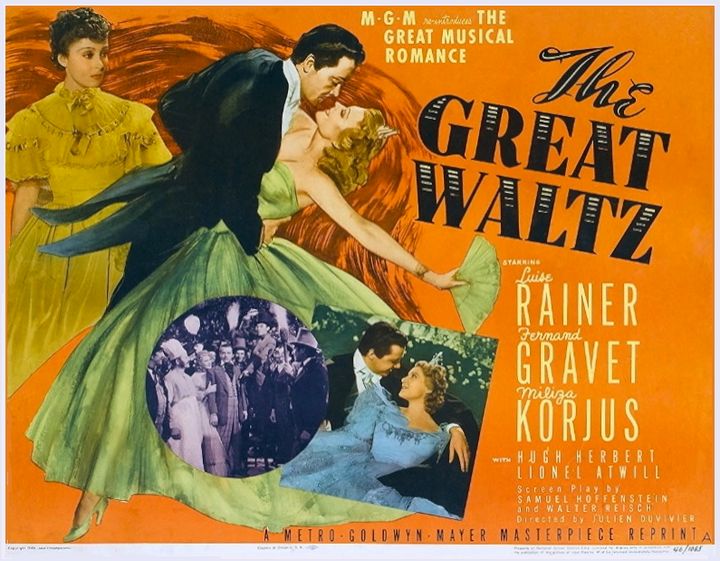
The Great Waltz (1938) – Lobby Card, 1946 re-issue
“The only thing that can compete with The Great Waltz,” said film historian and lecturer Dale Kuntz, “is the scene from The Great Ziegfeld [1936] – ‘A pretty girl is like a melody’. It’s beyond comprehension. I love Sweethearts and Maytime [1937] – but The Great Waltz is just that much more spectacular. Strauss’ music has never been played more beautifully on the screen. Most people know Strauss above any other composer. Just say, ‘Blue Danube Waltz.’ Strauss had an orchestra of ninety musicians. So did this movie. For theater-going audiences at the time, that sound was as close as they might ever get to what the Viennese heard from Strauss himself. The Great Waltz is the perfect blending of music, cinematography, cast – everything.”
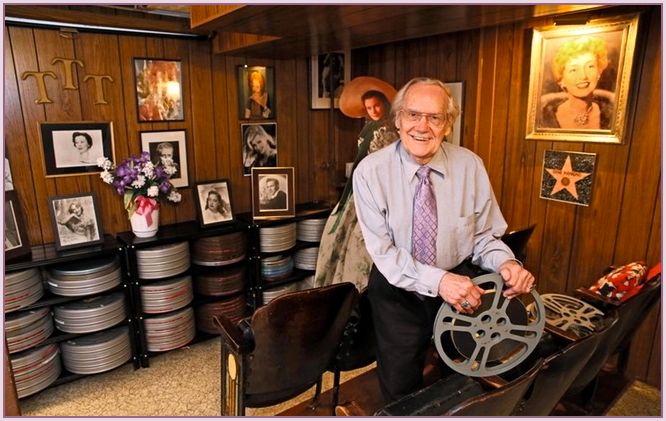
DALE E. KUNTZ (Notice Jeanette on the right)

MILIZA KORJUS – Arriving / Arrived / Assembled
Dale is a popular lecturer at the Charles Allis Art Museum in his hometown, Milwaukee, Wisconsin. For over fifty years he has hosted a group of avid film buffs – the FOOFs (Followers of Old Films) – in his basement screening room, aka, the Tiny Tara Theater. Our two-person appreciation society for The Great Waltz began in 1969 when we met at the week-long convention celebrating the 25th Anniversary of the Jeanette MacDonald International Fan Club. Really!? It’s true.

MAYTIME (1937) and SWEETHEARTS (1938)
Faithful fans from around the world came to honor the glamorous singer whose films, recordings, stage, radio and concert appearances had impacted their lives like no other artist. It was astonishing, also a riot. Dale and I bonded quickly during Day 1 of the meet ‘n greet. Later, behind a potted palm, we discreetly confessed that The Great Waltz was our #1 favorite musical film and that no-one-but Polish soprano Miliza Korjus could have possibly handled the role of “Carla Donner” – a coloratura superstar/goddess at Vienna’s Imperial Opera. Our beloved Jeanette would have agreed. Besides, she never wanted anything to do with it. Jeanette and Miliza became friends and confidantes. Dale eventually met Miliza when she was invited to one of the annual conventions.
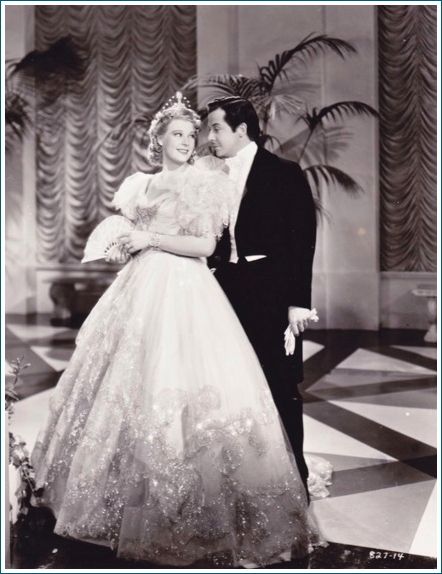
THE GREAT WALTZ (1938). Miliza Korjus and Fernand Gravet
“In 1937, Maytime was the top grossing film in the entire world. When Jeanette signed her new contract that year, she stipulated that they could never ask her to do ‘the Strauss biography’ or a re-make of The Vagabond King. I don’t know why she didn’t want to do The Great Waltz. Ironically, Jeanette never recorded any Strauss music nor was it ever played in any of her films. I’ve wondered if it was something associated with the original 1930 Viennese operetta [Walzer aus Wien] which deals with the fight between Johann Strauss Sr. and Junior. The leading ladies in this show are kind-of secondary. But Mayer bought the rights to it, knowing he would not use its libretto. Being a family man, he did not like the idea of conflict between father and son. So, he just had the writers concoct a whole new story!”
Dale and I have been talking Jeanette MacDonald, Miliza Korjus and The Great Waltz for almost fifty years. So, in view of all the latest in “Breaking News” – I suggested that now is the perfect time for us to finally declare The Great Waltz to be the best black-and-white musical ever made and its Oscar-nominated supporting star, Miliza Korjus, the greatest coloratura soprano of the early 20th century. That latter bit of bravura has been fueled by a recently released cache of her early operatic recordings with the Berlin State Opera Orchestra in MP3 format. The tracks include arias and art songs that neither Dale or I have ever heard. The clarity of her voice is likewise a revelation – a very different sonic experience from the soundtrack we’ve become accustomed to on the DVD of The Great Waltz. Turns out, the artistry and musicianship of Miliza Korjus is more dauntingly perfect than we realized.
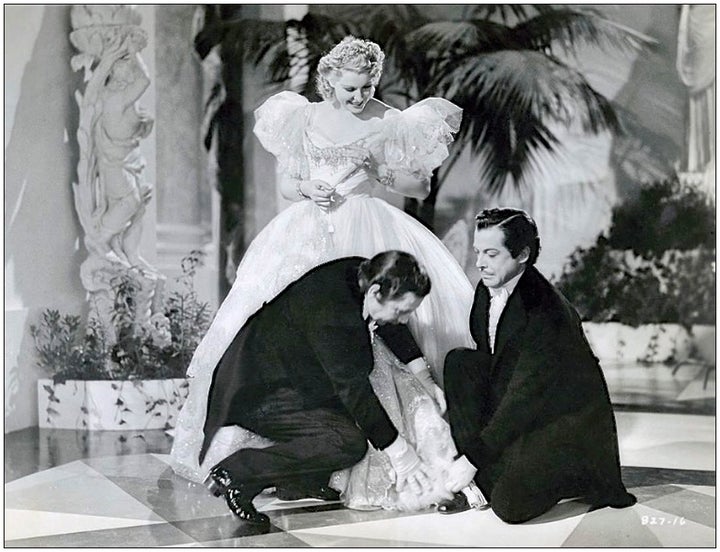
Miliza Korjus, Lionel Atwill, Fernand Gravet
MGM’s legendary music arranger Dmitri Tiomkin realized it when he took these same recordings (an album of 78s) into Irving Thalberg’s office and said, “Irving? You got a minute?” Among the operatic arias was the bewitching ‘Ou va la jeune Hindoue?’ (The Bell Song) from Delibes’ Lakmé.
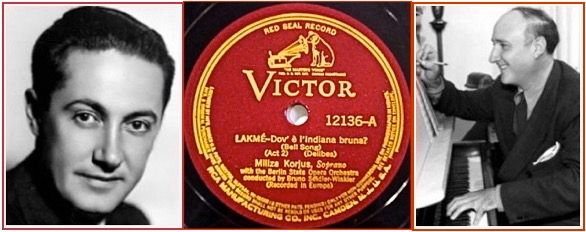
Irving Thalberg, Miliza Korjus 78rpm (Lakmé), Dimitri Tiomkin
“Every soprano does it and I’m so tired of listening to it,” said Dale. “But as I listened to Miliza, I realized that this is the way that aria should be sung. It felt new to me. So, I played it over again. It’s fantastic – as though I’m hearing it for the first time. That’s how I feel about this recording.”
So did Irving Thalberg. The smartest producer on the planet had likewise fallen under the spell of a real-life Lorelei. Thalberg lifted the needle, grabbed a pen, and committed Miliza Korjus to a ten-year-contract. No matter that she wan’t there – she can sign it later. At last! The studio had found its illusive “Carla Donner”. Dmitri Tiomkin had his Muse, the writers had a world class artist they could follow around and take notes from, and director Julien Duvivier saw how to make Louis B. Mayer’s dreams of Old Vienna come true. Roll ‘em! Action! A few months later Thalberg died of pneumonia.
The Great Waltz was not MGM’s first venture into rewriting history. The screenplay assignments went to Samuel Hoffenstein and Walter Reisch. Hoffenstein’s previous successes included Love Me Tonight, Wharf Angel, and The Gay Divorcee. Later on he would be assigned to Marie Antoinette, The Wizard of Oz and Laura. Mayer had spirited Vienna-born Walter Reisch out of Germany during a European talent-search in 1937. He also brought back the future stars of The Great Waltz – Miliza Korjus and Fernand Gravet along with the film’s director, Julien Duvivier. Reisch had a penchant for continuity and image-making. In addition to tailoring “Carla Donner” for Miliza Korjus, Reisch intensified the role of “Ninotchka” for Greta Garbo, “Paula” for Ingrid Bergman in Gaslight, “Rose” for Marilyn Monroe in Niagara, and “Carla Göteburg” for Arlene Dahl in Journey to the Center of the Earth.
During the film’s dazzling overture and screen credits comes a variation on a familiar apology: “Except for the characters of Johann Strauss and Franz Josef I, any similarity to actual persons, living or dead, is purely coincidental.” Following that and underscored by the sentimental strains of a violin is a fancy card, stating: “In Vienna in 1844, ‘nice people’ neither danced the waltz ... nor kissed their wives in public ... nor listened to new ideas. In 1845 came Johann Strauss II and his immortal melodies. We have dramatized the spirit rather than the facts of his life, because it is his spirit that has lived – in his music.”
“The music moves the story along,” said Dale. “You are encompassed by the music, by the sets and the characters – like a perfect opera. If you think Strauss is schmaltzy – you won’t after seeing this movie. There are some little things in the script that are true to Strauss’ life. The rest of it is not, such as him having only one wife. He had three! The first was an opera singer. Strauss wrote Die Fledermaus for her. The film has two scenes with him and the Austrian emperor, Franz Josef. That never happened either! Because Strauss wrote the march for the revolution, the emperor never appointed him as Conductor of the Imperial Opera. But it all makes for a wonderful story.”
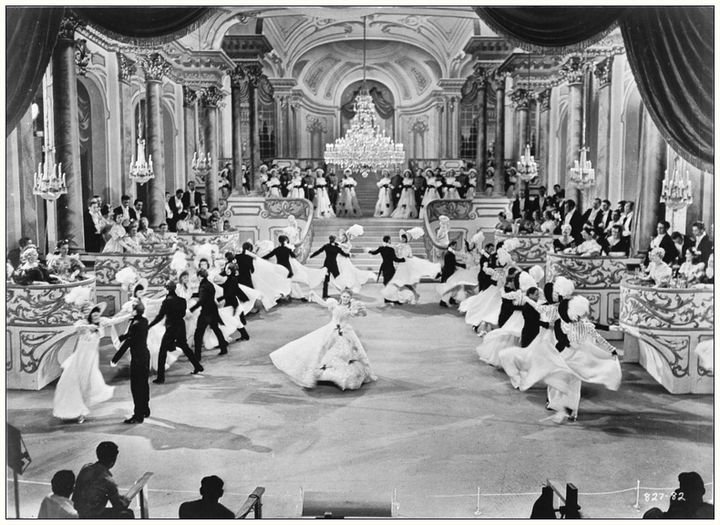
THE GREAT WALTZ. MGM, 1938